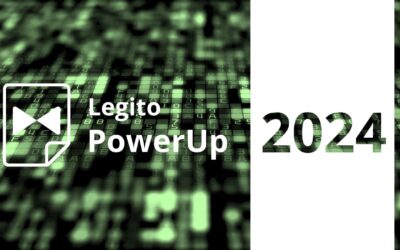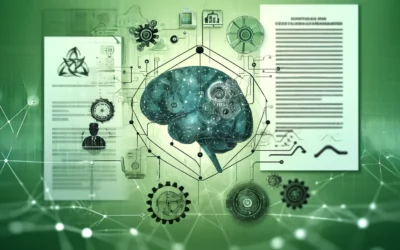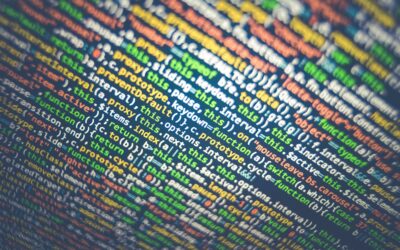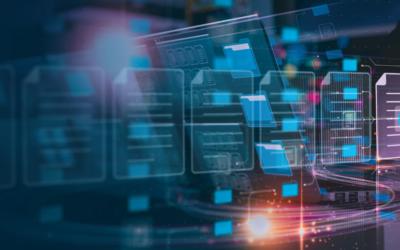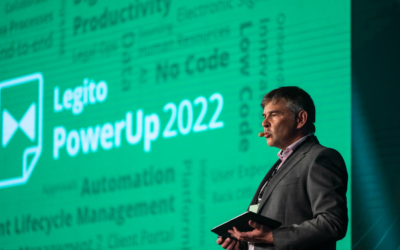Legal Ops Automation:
Interview with Teodora Bobcheva
As she points out, she had excellent mentors and had access to many different law practice areas such as Commercial, Corporate and M&A, Litigation, Real Estate, Construction, Administrative, Labour, Family law and many others. This gave her first-hand experience and practical expertise at a very early stage in her career.
Later, she took an offer to work closely with an IT company and discovered the world of professional IT services. She went through a huge transition from working in a law firm to gaining deep business knowledge and completed a 6-months software quality assurance course. Thus, five years later, accidentally on purpose, she managed to combine her passion with her obsession in the face of Legal Tech.
To begin with, could you please share with us what you find particularly fascinating about legal tech?
Legal tech is a multidisciplinary approach that breaks the general concept for the legal industry being conservative. No one likes legal documents, especially when they are 20 plus pages. Legal tech helps us have all papers in one place without killing the excitement of the work we are going to do after we sign the entire set of documents.
“Legal tech helps us have all papers in one place without killing the excitement of the work we’re going to do after we sign the entire set of documents.”
What do you think are the most contributive latest trends in legal tech that companies and law firms can benefit from?
There is a lot of talk about AI and complete contract automation where machines would listen to live negotiations and draft contracts in real time. Of course, the possibilities are endless. What I think is most relevant now is the Smart Document Automation that is needed really in all legal companies. The variety of documents is ever-increasing, but there is also the reusability and knowledge accumulation aspects. I think it is very important, before the big step into the Legal AI world, for companies to start automating their documents so the AI would have some basis for creating the platform for complete automation.
Other interesting trends are: virtual working spaces that shorten the distance between the lawyers (internal or external) and their clients (internal or external); Virtual law firms and virtual courtrooms; Compliance solutions (e.g. Whistleblowers related solutions data privacy and data security-related solutions); Blockchain technology (e.g. passports, labour books, shareholders registers, protocol books (protocols from shareholders/Board of directors meetings)
What do you think are the most contributive latest trends in legal tech that companies and law firms can benefit from?
There is a lot of talk about AI and complete contract automation where machines would listen to live negotiations and draft contracts in real time. Of course, the possibilities are endless. What I think is most relevant now is the Smart Document Automation that is needed really in all legal companies. The variety of documents is ever-increasing, but there is also the reusability and knowledge accumulation aspects. I think it is very important, before the big step into the Legal AI world, for companies to start automating their documents so the AI would have some basis for creating the platform for complete automation.
Other interesting trends are: virtual working spaces that shorten the distance between the lawyers (internal or external) and their clients (internal or external); Virtual law firms and virtual courtrooms; Compliance solutions (e.g. Whistleblowers related solutions data privacy and data security-related solutions); Blockchain technology (e.g. passports, labour books, shareholders registers, protocol books (protocols from shareholders/Board of directors meetings)
What do you think is the best way to start with document automation?
I am surprised how often people confuse Smart Document Automation (SDA) with blockchain smart contracts.
One of the interesting things we learned while working with Legito was that it is very important for the legal department to structure the documents in the right way. Having a unified header and footer for the parties or making sure all definitions are exactly the same across all contracts serves a great way forward toward easier automation. Legito offers several functionalities that I think legal specialists need to understand first in order to structure their documents better. Having correct system names and using the available tags appropriately is what makes the difference.
Another important thing is to take everyone involved on board (I used a bottom-up approach – my business consultant and I did the demo before the SDA users, got them on board and then presented it to the management).
The internal implementation is the best POC (proof of concept) you can do – if you can implement the SDA in-house successfully, you can do it in all other cases, and you will definitely go above and beyond.
What are the 3 most important things you had learned when you were deploying document automation?
I would advise anyone who has the available time to think about the process of dealing with clients right from the start. Do they want to send a lengthy contract to a client asking them to fill in the blanks or maybe send them a very short form that avoids confusion altogether? Do they want to involve third parties in the process, and what documents do they want the third parties to see? Are there confidential documents that only certain people within the organization have the authorization to see? There are many aspects which are important, but what I would advise is that legal professionals get to know the platform first, decide on the process of implementation, test it with one or several documents, and when they are happy with the result, continue with full implementation.
The documents that you want to automate must be approved and ready to use. It is a huge hassle if you start automating documents and at the same time start redrafting clauses because you have an idea how to say something better)
Think about the structure of the document and the approach of how you will automate it. For example, whether you will give the user the possibility to choose from different options (using the select function), or leave it up to the user to enter specific commercial terms (text input), or ask the user questions and based on the answers, different conditions shall apply.
You must have a clear idea for the entire process and the results you want to achieve and the goals you pursue.
You have to know the way the SDA users think and work. I am creating documents that are used by users with little or no legal knowledge.
How did you come across Legito, and what do you find are its strengths compared to other document automation solutions?
We looked through several options that were suggested by Capterra. What we didn’t want was an MS Word add-in or a solution that can be installed only on a desktop. Also, we wanted visual automation, where we can feel the reduction of manual effort. This is where I think Legito shines the most. Having static text with dynamic elements to fill in or select as well as having an option to generate several documents in a batch made us think that Legito was the right solution for us.
How many departments benefit from document automation in your company? Which ones?
We have almost completed the implementation of Legito in the Legal department, and by the new year, we will be looking into implementing Legito in the Sales, Procurement, HR and Administration departments. Our next steps would be integrating Legito with our current CRM and ERP system, so the process from customer call to an offer would become seamless.
Have you been using document automation just within your company or also externally, for example, for contract negotiation with your suppliers or clients?
We are using document automation across the board. We think there is no need for anyone to copy an old MS Word document from some folder onto their desktop, delete most or maybe all contents and start from a messy version or from scratch. Many mistakes can be made, and document automation decreases the chances of such tremendously. I’m not even going to go into the aspect of knowledge accumulation and continuous improvement of final documents.
What documents did you automate?
From Non-disclosure agreements, Professional Services Agreements and Statements of Work to General Terms and Conditions, Privacy and Cookie policies and contracts with Vendors. We have very specific contracts for some of our products that were handcrafted and some which we receive from external legal companies that specialize in a unique niche, thus helping us enter new markets.
How did document automation change the way departments in your company work?
It gave me the freedom to focus my expertise where it’s needed! Initial meetings and communications with major customers require much time. Internal management meetings where we discuss the future of the company need my absolute attention, and now I can do that because I’m not afraid that someone might have missed an important aspect when drafting or generating the day-to-day contracts and statements of work. This freedom is what is most beneficial for me, and I think it would also be for anyone in a high legal position.
What is the state of legal tech deployment in Bulgaria? Where do you see the potential to improve the effectivity of the Bulgarian companies?
Most legal companies use the standard “MS Word to the customer and back/forth” method. Most customers are happy with this method, but they are not aware of what document automation platforms can bring to the entire business. It is a nice coincidence that we are a professional services provider that is also a distribution partner for Legito because now my colleagues from the Legal department and I can also become billable (laughs).
And lastly, what are your views on future plans for document automation?
There are many aspects we can improve on — for example, integration. Smart Document Automation creates smart documents, but they are still documents, which need to be filled in with information. The types of documents, formatting and information specific elements are a vital part of smart document automation. I think the next step would be a complete Document Management System seamlessly integrated with Smart Document Automation platform that can handle large amounts of user input and an ever-increasing number of documents. Once there is big data being generated from all these integrations, I’m sure we will see the next step entire AI document automation and management.
Thank you very much for talking with us and sharing your views on document automation, Teodora!
More Industry Insights

